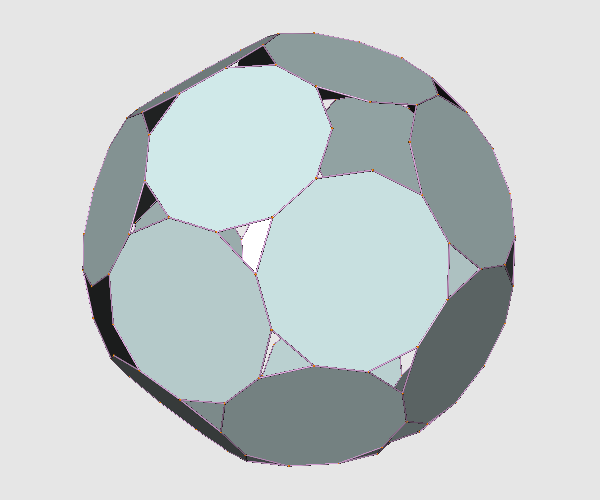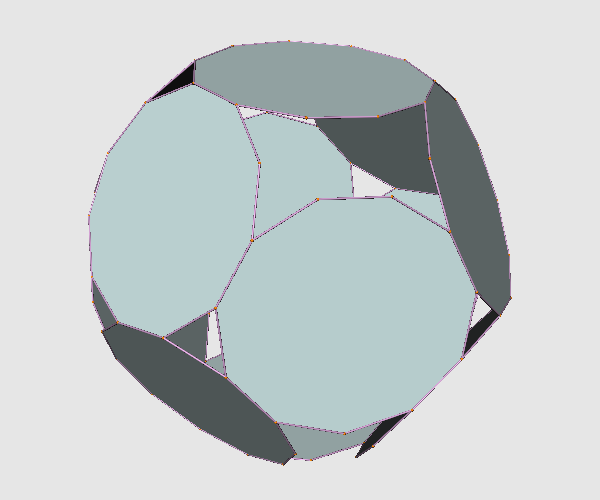Controversial Nano-Cages:
Recently, the Heddle lab have generated a spherical like assembly of TRAP proteins made out of 24 regular faces, each made out of 11 TRAP proteins. We call the structure a cage because it also has 38 small holes. That geometry is known to be mathematically impossible, so to elucidate this mystery, we have generated mechanical models of such cages and showed that they are realisable if one allows for a 0.5% deformation of the edges and the angles of the polygonal faces Nature 569 (2019) 438-442 doi 10.1038/s41586-019-1185-4.

|

|
|
| 24 hendecagons (11 edges polygon) forming a nearly regular cages. Edges and angles of each face are at most 0.5% different from a perfectly regular hendecagon | 12 hendecagons (11 edges polygon) forming a nearly regular cages. Edges and angles of each face are at most 1.8% different from a perfectly regular hendecagon |